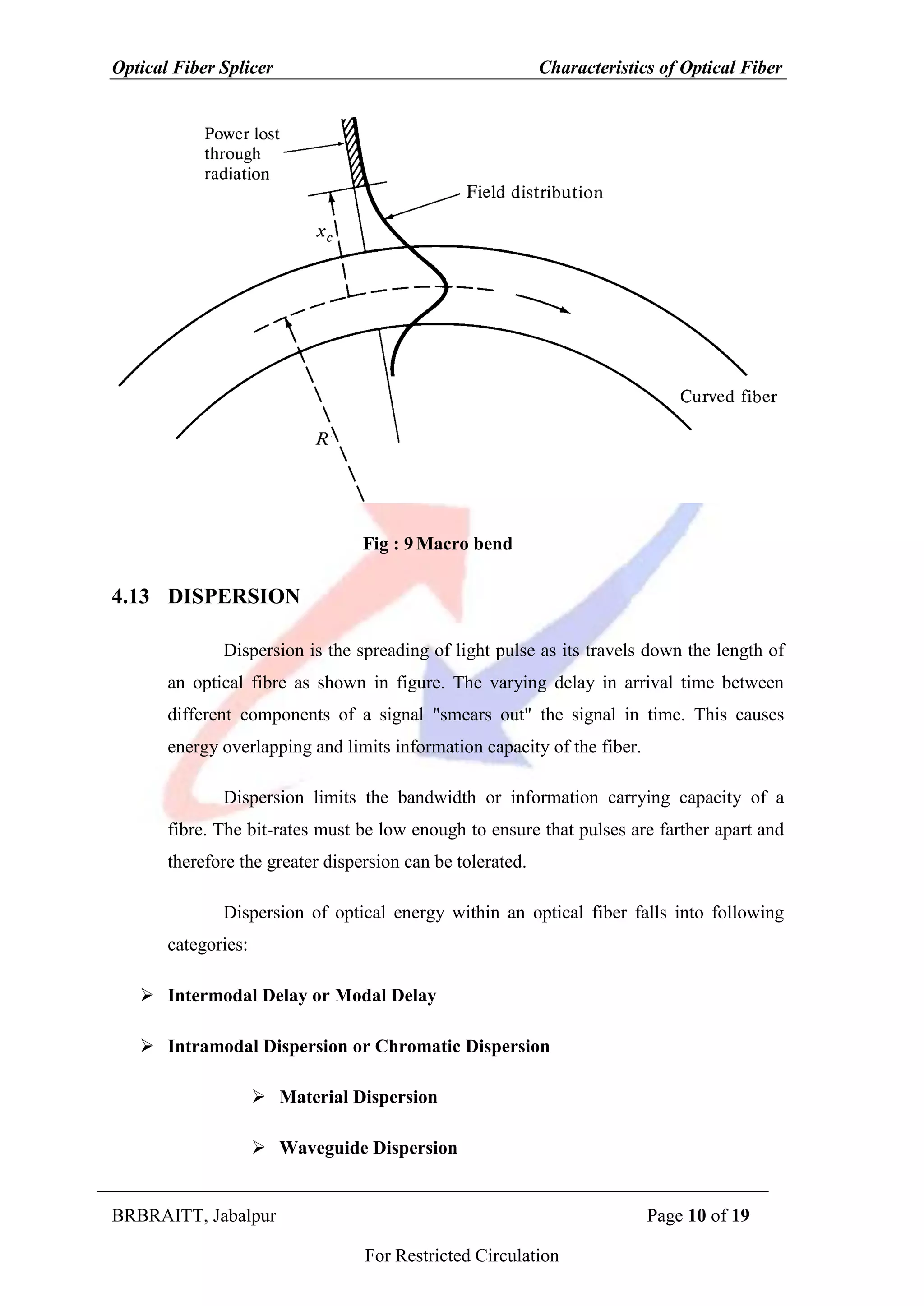This document discusses key characteristics of optical fibers that affect their performance as a transmission medium. It describes how wavelength, frequency, reflection, refraction, polarization, and attenuation properties influence fiber optic communication. Specific bands used in optical fibers, including O, C, E, S and L bands, are defined. The document also examines intrinsic and extrinsic factors contributing to fiber attenuation, as well as dispersion which limits bandwidth by spreading out light pulses over time as they travel through the fiber.


















